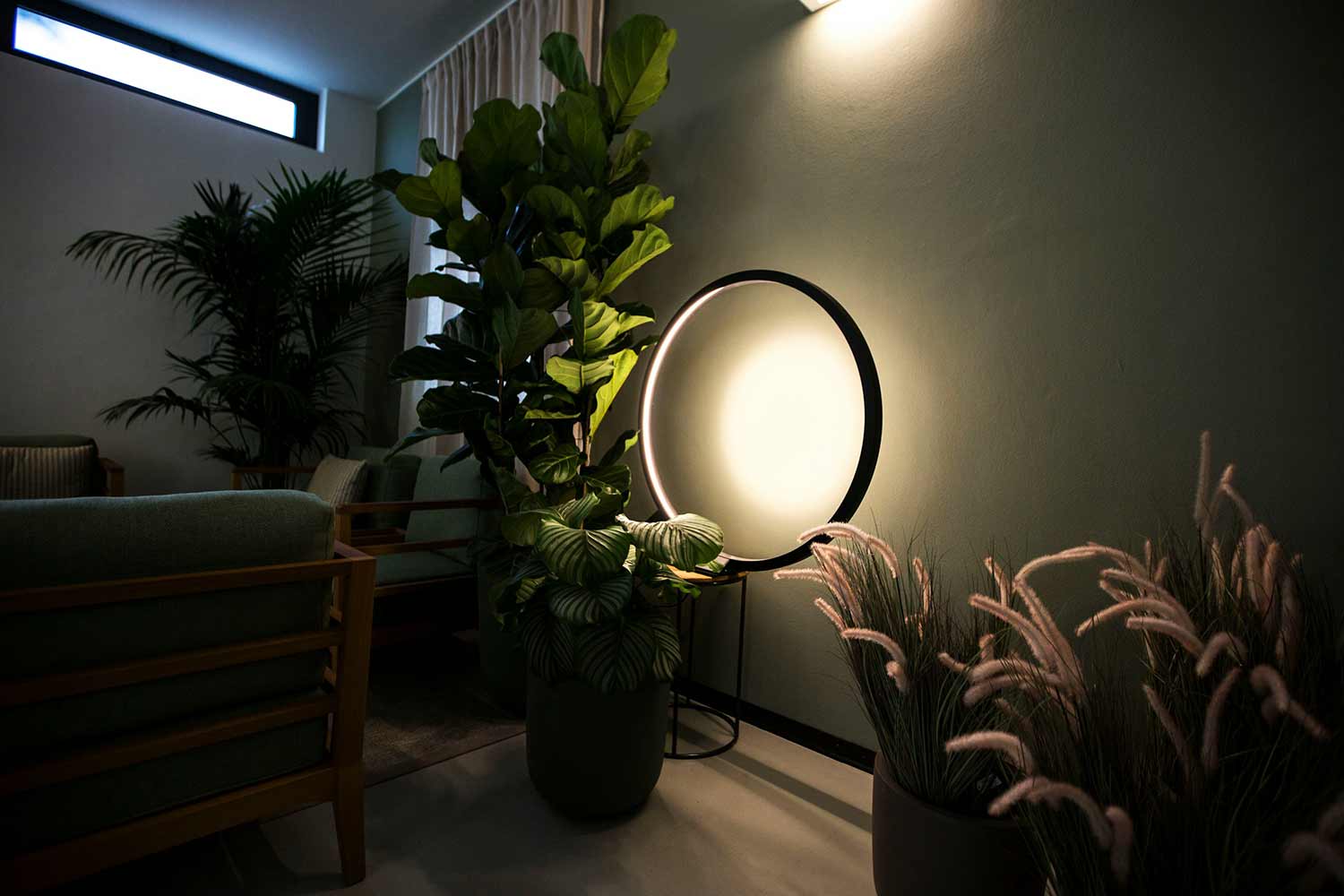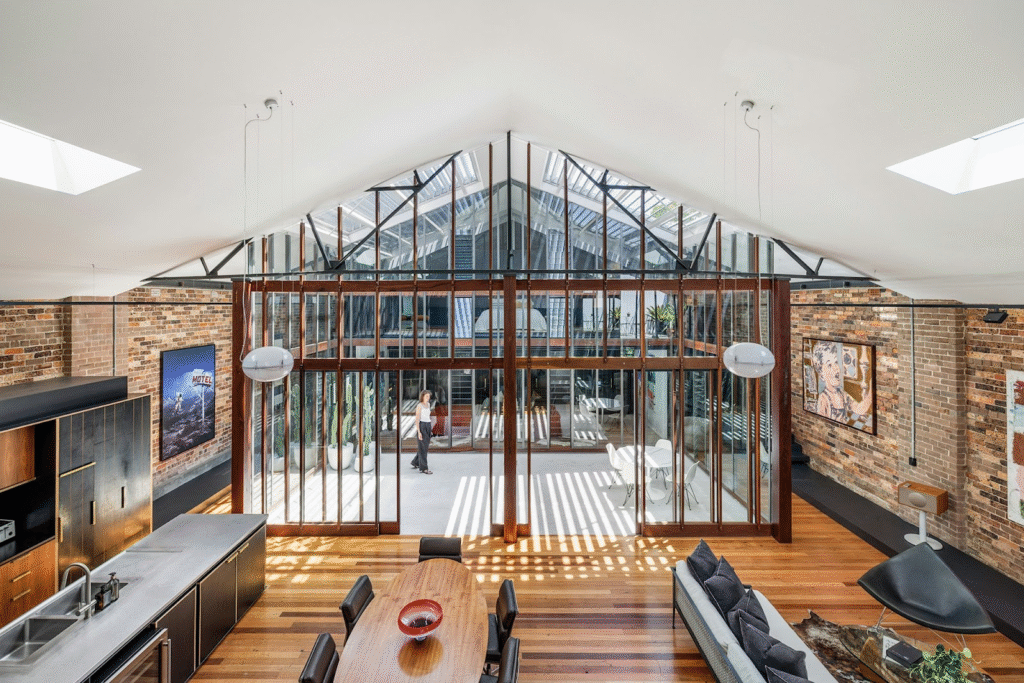How Lighting Design Can Transform Your Interior lighting is often the unsung hero of interior design. While furniture, wall colors, and décor take center stage, the right lighting design in interiors can elevate a space, create ambiance, and influence how a room is perceived. Just as an artist uses a brush to add depth and mood to a canvas, lighting has the ability to completely transform the way we experience a space. Whether you’re designing a cozy living room, a productive home office, or a stylish dining area, the way light is incorporated into your space is integral to creating an environment that is functional, comfortable, and aesthetically pleasing.
In this guide, we explore how strategic lighting design in interiors can reshape the energy of a room, enhance its functionality, and even impact your well-being. By understanding the principles of light, experimenting with different types of lighting, and considering the science behind lighting placement, you can craft spaces that are both visually stunning and practical.

1. The Power of Layered Lighting
One of the foundational principles of lighting design in interiors is the concept of layering light. A single light fixture, no matter how beautiful, cannot provide the full range of lighting a room needs. Layering light from different sources creates depth and versatility in your space. A well-executed layered lighting design can highlight certain areas of a room, provide functional task lighting, and create a soothing atmosphere for relaxation or entertainment.
Ambient Lighting: The Foundation
Ambient lighting serves as the primary source of illumination in any space. It provides a uniform, overall light level that ensures the room remains well-lit without straining the eyes. Recessed ceiling lights, chandeliers, and pendant lights are all great examples of ambient lighting sources. The goal is to ensure that the room is bright enough to navigate comfortably.
However, many make the mistake of relying solely on overhead ambient lighting. While it may seem sufficient, it often creates harsh shadows and lacks the warmth needed to bring the space to life. Ambient lighting should always be complemented with other layers to achieve a well-rounded lighting scheme.
Task Lighting: Focusing on Function
Task lighting illuminates specific areas where activities such as reading, cooking, or working take place. Its purpose is to provide enough light for tasks that require attention to detail. For example, pendant lights above a kitchen island, reading lamps beside a chair, or desk lamps in a home office all serve as task lighting.
When incorporating task lighting into your lighting design in interiors, consider the intensity and direction of the light. Task lights should focus on the work area without spilling over into other parts of the room, which can cause distractions or discomfort.
Accent Lighting: Highlighting Key Features
Accent lighting is the most decorative layer of lighting design, meant to highlight architectural features, artwork, or plants in a room. It adds drama and depth by creating contrast and emphasizing focal points. For instance, wall-mounted sconces can draw attention to a painting, or track lights can spotlight sculptures or other unique features.
In lighting design in interiors, accent lighting creates mood and highlights the beauty of the space. It’s often more subtle and focused than other types of lighting, creating a sense of intrigue and interest.
2. The Science of Light: How Color Temperature Affects a Room
Understanding the science behind light drastically improves how you design your space. One important aspect of lighting design in interiors is color temperature—the warmth or coolness of light. The color temperature of your lights influences the mood and functionality of the room.
Warm Light for Comfort
Warm light (around 2700K to 3000K) emits a cozy, inviting glow that makes a room feel comfortable and relaxing. It’s often associated with incandescent bulbs and is perfect for creating intimate, restful spaces. Living rooms, bedrooms, and dining areas benefit from warm lighting, as it fosters a relaxing ambiance conducive to unwinding.
In lighting design in interiors, warm lighting creates a welcoming environment. Whether it’s a golden-toned table lamp casting soft shadows on a side table or a dimmable pendant light above a cozy reading nook, warm lighting enhances comfort and relaxation.
Cool Light for Focus and Productivity
Cool light (between 4000K and 5000K) mimics daylight and is known for its invigorating effect. It boosts energy, concentration, and alertness, making it ideal for spaces where focus and productivity are essential, such as kitchens, home offices, or study areas.
When designing a lighting design in interiors for tasks that require mental clarity, opt for cooler, brighter light. It improves visibility and encourages efficient work. However, too much cool light in a living space can make the room feel sterile or overly clinical, so it should be used strategically.
Neutral Light for Balanced Atmosphere
Neutral light (around 3500K to 4000K) strikes a balance between warm and cool tones, offering versatility in a variety of settings. It doesn’t lean too far in either direction and works well in areas that require a mix of functionality and relaxation, such as kitchens, bathrooms, and dining rooms.
For a dynamic lighting design in interiors, incorporate a mix of cool, warm, and neutral lighting to ensure that each room serves its purpose while maintaining harmony.
3. Light Fixtures: Statement Pieces or Subtle Details?
In lighting design in interiors, the fixtures themselves are a vital part of the aesthetic. A well-chosen light fixture can serve as the focal point of a room or blend seamlessly into the background, depending on the desired effect.
Statement Light Fixtures
Statement lighting fixtures are bold, eye-catching pieces that instantly transform a room. Chandeliers, oversized pendant lights, and sculptural floor lamps all fall into this category. These fixtures work well in areas such as entryways, dining rooms, and living rooms, where they can serve as both a functional light source and a work of art.
A statement light fixture doesn’t just illuminate a space; it makes a statement about your personal style and enhances the overall atmosphere of the room. However, it’s important to strike a balance—too many statement pieces can make the room feel cluttered or overdone.
Subtle Light Fixtures
On the other end of the spectrum, subtle light fixtures offer a more understated approach. Wall-mounted sconces, recessed lighting, and simple table lamps provide functionality without drawing too much attention. These fixtures are ideal for creating a soothing, cohesive atmosphere.
When incorporating subtle light fixtures into your lighting design in interiors, the goal is to ensure that they complement the overall aesthetic rather than overpower it. By using a mix of subtle fixtures with more prominent pieces, you can create a dynamic and harmonious space.
4. Lighting Design for Different Rooms: Tailoring the Approach
Each room in your home serves a different purpose, and thus, requires its own unique lighting design. Here’s how to approach lighting design in interiors for various spaces:
Living Room: Cozy Yet Functional
The living room serves as a place for relaxation, entertainment, and socialization. The goal is to create a warm and inviting atmosphere while providing enough light for reading, conversation, and other activities. A combination of ambient, task, and accent lighting works well in living rooms.
Consider using a statement chandelier or pendant light as the focal point, complemented by task lighting such as table lamps for reading. Accent lighting, such as floor lamps or wall-mounted fixtures, can highlight artwork or architectural features.
Kitchen: Bright and Practical
The kitchen requires a balance of bright, focused lighting and more ambient light. Lighting design in interiors for kitchens should emphasize task lighting for food prep, cooking, and cleaning, as well as softer ambient light for a relaxed dining experience.
Pendant lights above the kitchen island, under-cabinet lighting for countertops, and recessed lighting in the ceiling can ensure that all work areas are well-lit and functional. Additionally, incorporating some warm, ambient light softens the overall look of the space.
Bedroom: Soft and Relaxing
The bedroom should feel like a sanctuary—calm, restful, and inviting. Soft, warm lighting creates a peaceful atmosphere, helping you unwind after a long day. Lighting design in interiors for bedrooms typically includes ambient lighting from ceiling lights or lamps, as well as task lighting for reading or getting dressed.
Consider using dimmable fixtures so you can adjust the lighting depending on your needs. Pendant lights or wall sconces beside the bed provide a stylish, space-saving alternative to table lamps, while soft lighting under the bed or along the walls can create a serene, ambient glow.
Bathroom: Clean and Refreshing
In the bathroom, proper lighting is essential for both functionality and ambiance. Lighting design in interiors for bathrooms should focus on providing bright task lighting around the mirror for grooming and makeup application. Recessed lighting or pendant lights can provide soft, ambient illumination for the rest of the space.
Additionally, consider using waterproof or moisture-resistant fixtures to ensure long-lasting performance. Incorporating dimmable lighting also adds a touch of luxury, allowing you to create a relaxing, spa-like atmosphere when needed.
5. Smart Lighting: The Future of Lighting Design
As technology continues to advance, smart lighting is becoming an essential element of lighting design in interiors. Smart lighting systems allow you to control the brightness, color temperature, and even the color of your lights with the touch of a button—or by voice command.
Smart lighting can be programmed to adjust throughout the day, creating a dynamic lighting scheme that matches the natural rhythms of your home. For example, you can set your lights to gradually brighten in the morning and dim in the evening, simulating natural daylight and promoting a healthier sleep-wake cycle.
Benefits of Smart Lighting:
- Convenience: Control your lights remotely or with voice commands.
- Energy Efficiency: Set timers and schedules to reduce energy consumption.
- Customizable Ambiance: Create different lighting scenes for various moods or activities.
- Increased Security: Smart lights can simulate occupancy when you’re away, providing an added layer of security.
The importance of lighting design in interiors cannot be overstated. It has the power to transform a space, enhancing both its function and beauty. By layering light, understanding the science behind different light temperatures, choosing the right fixtures, and tailoring your lighting approach to each room, you can create an environment that is both welcoming and practical. Whether you’re illuminating a cozy living room, a productive workspace, or a peaceful bedroom, lighting plays a pivotal role in shaping the atmosphere and mood of your home. So, embrace the power of light and let it illuminate your space in the most delightful ways.







